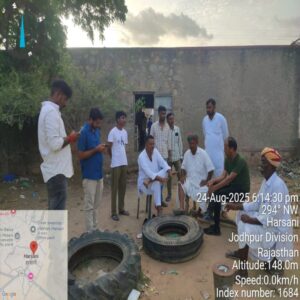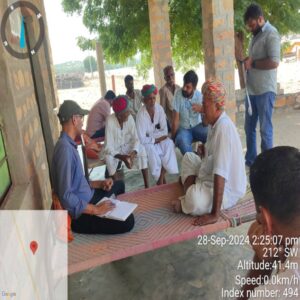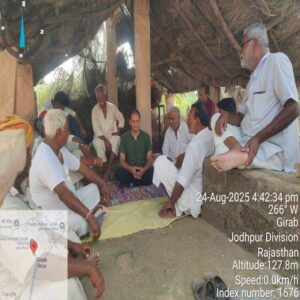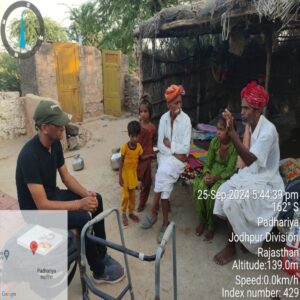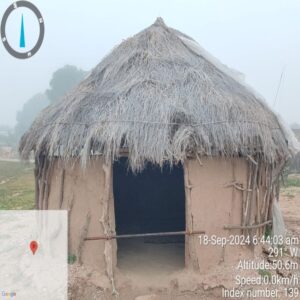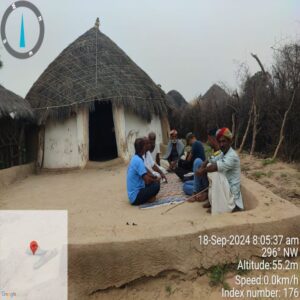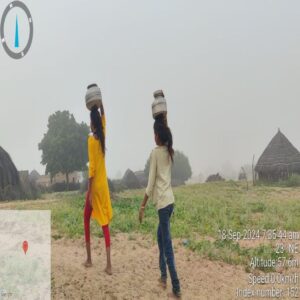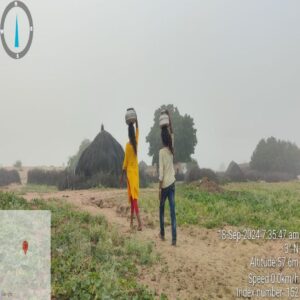Programs
- M. Tech. in Automotive Engineering -Postgraduate
- B. Tech. in Computer Science and Engineering (Quantum Computing) 4 Years -Undergraduate

This project aims to foster a cultural shift toward gender equality by strengthening the capacities of women and men across two rural villages in Barmer District, Rajasthan. Using a participatory, systems-based approach, the intervention will promote inclusive leadership, shared responsibilities, and community resilience. By integrating skill-building, emotional well-being, digital empowerment, and social change, the project will enable women and men to more effectively access, influence, and shape the systems and institutions around them. Ultimately, the goal is to catalyze a community-led transformation in which development is not delivered from outside but built from within—rooted in empathy, equity, and mutual accountability.
A multi-dimensional, multi-method systems approach will guide implementation, with a strong gender lens that challenges biases and fosters gender harmony. This approach expands community awareness and institutional access while creating sustained livelihood and leadership opportunities for both women and men.
Centring on the “mental space” domain—emotions, perceptions, and internalized norms—the framework extends to awareness, access, and opportunity across six dimensions: economics and livelihood, education and skill development, health, environment, social and cultural life, and safety.
The project will be implemented across two villages—Garab and Harsani—in Sheo Constituency, Barmer District. In Garab, a solar-powered Community Multi-Service Center will be renovated and co-created by the community. This hub will serve as the operational base for the project’s core activities: women’s leadership and SMART SHG development, cloth-based handicraft training, digital and mobile technology literacy, structured emotional and social programming for men and boys, and immersive VR/AR-based empathy-building experiences. In Harsani, the project will implement all soft-skills, leadership, and social empowerment components, including digital literacy and community-led awareness events, without the physical center or handicraft-based training. In both contexts, the project takes a layered, inclusive approach that builds capacity, strengthens community cohesion, and empowers participants to shape a more equitable future.
In September 2024, Amrita University and its Center for Women’s Empowerment and Gender Equality (CWEGE) conducted a needs assessment across several villages in the Sheo Constituency of Barmer District, Rajasthan. The study revealed severe challenges related to poverty, inadequate housing, lack of safe drinking water, poor education and healthcare infrastructure, weak transportation and digital connectivity, and limited livelihood opportunities. The Sheo DNP (Desert National Park region), with a population of about 70,000 people across 15,002 households in 98 villages (including Drabha, Kubadiya, Sundara, Gadas, and Girab), is among the worst affected. Census 2011 data highlights stark inequalities: a gender ratio of 841 females per 1,000 males (below Rajasthan’s 928 average), a child gender ratio of 770 (state average 888), and female literacy of only 39.32%, compared to the state average of 66.11%.
A 2024 field needs assessment by CWEGE revealed urgent community concerns—lack of livelihoods, clean water, accessible healthcare, and inclusive governance. Villages like Drabha, Kubadiya, Sundara, Gadas, and Girab expressed strong interest in craft-based skill training and structured group support systems for long-term resilience.
The assessment, carried out in consultation with the local MLA, identified deprivations across water, health, education, livelihoods, and infrastructure. The most urgent demand is for reliable drinking water, alongside all-weather roads, electricity or solar power, and improved housing. Education is hindered by poor infrastructure, vacant teaching posts, and limited skill training opportunities, while healthcare remains constrained by non-functional PHCs/CHCs, lack of staff, and inadequate maternal and child health services. Livelihoods are precarious due to rainfed agriculture, weak market linkages for women’s handicrafts, and insufficient support for livestock. Communities also stressed the need for transparent welfare delivery, disaster relief, and digital connectivity. Despite ongoing schemes, budget constraints, infrastructure gaps, weak education systems, staff retention issues, and poor connectivity continue to trap many villages in a cycle of poverty and exclusion.
The project will be deployed in 2 villages in the Sheo Constituency of the Barmer District, Rajasthan: Harsani and Garab.
Laying the Groundwork: Community Mobilization and Local Facilitation
To begin, the project will identify and train four local facilitators—two men and two women, one male-female pair per village. These individuals, embedded within their communities, will lead the mobilization process, help identify participants, coordinate activities, and serve as ongoing points of contact throughout implementation. In parallel, a comprehensive baseline survey will be conducted across both villages. This will gather data on key indicators related to skills, leadership, digital literacy, gender attitudes, and access to services.
Harsani’s Community Multi-Service Center: Built by the Community, for the Community
In Harsani, the project will support the co-creation of a solar-powered Multi-Service Center by renovating an existing structure. A few potential government buildings have already been identified as possible sites for this center, which will be finalized in consultation with the community and local authorities (pictured below).
The solar-powered Multi-Service Center will be renovated by community members, with the solar component installed under the guidance of experienced trainers. Beyond its physical function, the center will serve as the beating heart of the intervention—a shared space where critical project activities converge.
The renovation process will double as a training platform for local men and women, who will participate in hands-on, practice-oriented instruction in key trades.
Up to 10 men from the village will be trained through direct application in:
Women’s Leadership and SMART SHG Development in both villages
Women leaders will receive additional training using Amrita’s own SMART SHG training content, which has already been successfully implemented in other contexts:
Handicraft-Based Product Skill Development for Women in Harsani: Creative, Market-Aligned, and Empowering
Once the center is operational, 20 women in Harsani will participate in structured handicraft-based product skill development, designed to build both creative capacity and economic potential. This training will be rooted in the CVET + LEE model (Computerized Vocational Education and Training with Life Enrichment Education) developed by AMMACHI Labs, combining technical, business, and personal development.
Participants will be trained in:
Engaging Men and Boys in Garab and Harsani: Toward Gender Harmony and Mutual Understanding
A central pillar of the project is the active engagement of men and boys in building more equitable and cohesive communities. In both Garab and Harsani, men will be invited to participate in structured programs that strengthen their emotional resilience, expand their practical capabilities, and support more inclusive relationships at home and in the community.
Through a combination of workshops, facilitator-led discussions, and skill-building sessions, up to 40 men in each village will be engaged on themes such as:
Throughout the project, monitoring will be guided by the AWESOME framework, assessing change across vocational, social, and emotional domains.
Using baseline and endline data, the project will evaluate:
Data will be collected via surveys, focus groups, facilitator reports, and community reflections, enabling adaptive learning and accountability. The deliverable is a documented, evidence-backed impact assessment to inform future scale-up across similar rural contexts.
